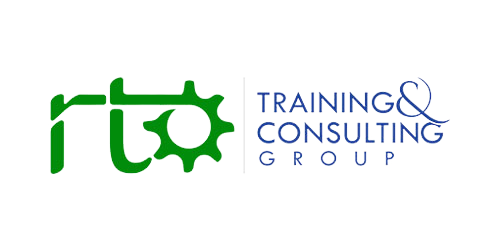The year is 2025, and a startling truth is emerging from the Australian professional landscape: despite Australians living longer, healthier, and more cognitively vibrant lives, a pervasive and destructive form of prejudice – ageism – continues to plague our workplaces. This isn't just an anecdotal observation; it's a systemic issue, highlighted by recent findings from the Australian HR Institute and the Australian Human Rights Commission, revealing that nearly a quarter of employers astonishingly classify individuals over 50 as "old." This is a clear example of age discrimination, and it's deeply concerning. Valuing experience and wisdom should be fundamental in any workplace, yet treating over-50s as "old" not only undermines their invaluable contributions but also perpetuates harmful stereotypes that are demonstrably false in the current climate.
It's time for a radical shift in perspective. The tired narrative that an ageing population is an economic albatross or a drain on national budgets is not only outdated but actively detrimental to our collective prosperity. The truth, supported by compelling new international research, paints a far more optimistic picture. Our destiny is not determined by demographics alone, but by the smart policies we enact and, crucially, by the willingness of employers to shed their antiquated biases. This article will delve into the profound societal and economic implications of ageism in 2025, expose the fallacies underpinning this prejudice, and outline the urgent actions required to foster a truly inclusive and age-diverse Australian workforce.
The Absurdity of "Old" in the Modern Workforce
Consider the sheer illogicality of labelling a 50-year-old as "old" in today's context. An individual who embarks on a 45-year career, aiming to retire at 67, would, under this prejudiced classification, be considered "old" for nearly 40% of their working life. This isn't just an unfortunate statistic; it's an indictment of a mindset rooted in ignorance rather than reality. It's a prejudice targeting our future selves, dismissing decades of accumulated knowledge, refined skills, and invaluable professional networks.
The ugly truth about ageism is that, like all forms of discrimination, it defies reason. It's an opinion based on unfounded assumptions, not on the demonstrable capabilities of individuals. As Australians, just like our counterparts in wealthy societies around the world, we are living longer and staying healthier for longer. This should be a cause for celebration and strategic leveraging, not a reason for economic anxiety or discriminatory practices. The notion of an "ageing population" as a burden is a self-fulfilling prophecy if we allow our biases to dictate policy and employment practices.
Cognitive Evolution: The New Reality of Age
Compelling new research from the International Monetary Fund (IMF) unequivocally refutes the outdated views on age and capability. Their analysis, spanning data from 41 countries, reveals a truly remarkable trend: a person who was 70 years old in 2022 exhibited the same cognitive health scores as a 53-year-old at the turn of the century. This is not a marginal improvement; it's a spectacular leap in mental acuity, demonstrating that cognitive decline is far from an inevitable consequence of chronological age.
This significant improvement in cognitive health is, unsurprisingly, mirrored by people maintaining better physical shape well into their 60s, 70s, and beyond. As IMF economists Bertrand Gruss and Diaa Noureldin astutely note, "Better health means better labour market outcomes." This is a crucial point that employers and policymakers must internalise. The human capital available in our older population is not diminishing; it is, in fact, evolving and expanding. To ignore this reality is to deliberately cripple our own economic potential.
Unlocking Potential: Policy and Practice for an Age-Diverse Economy
The IMF's findings go beyond merely highlighting improved health. Gruss and Noureldin meticulously demonstrate that enlightened policies can significantly mitigate the economic "drag" often attributed to an ageing population. Specifically, they identify two critical areas: a focus on ongoing training and more incentives to keep people in the workforce longer. These proactive measures have the potential to offset a staggering three-quarters of the expected economic slowdown globally over the coming decades.
The impact of these policies is profound. The economists reveal that "Over a decade, the cumulative improvement in cognitive capacities experienced by someone aged 50 or over is associated with an increase of about 20 percentage points in the likelihood of remaining in the labour force." This is not a small gain; it represents a significant boost in workforce participation from a demographic often prematurely pushed out of employment. Furthermore, this continued engagement is associated with "an additional six hours worked per week and a 30% increase in earnings." These aren't just statistics; they are tangible benefits that could substantially "mitigate ageing’s drag on growth," transforming what is perceived as a burden into a powerful economic engine.
Reframing the Narrative: Beyond the "Drooling Oldie" Stereotype
For years, Australia's intergenerational reports from the Treasury have served an invaluable role in focusing public attention on the budgetary implications of an ageing population. While these reports are undeniably useful for informing crucial debates around taxation reform and long-term planning, they may have inadvertently contributed to a harmful narrative. This narrative, perhaps unintentionally, has sometimes painted a picture of older Australians as a dependent demographic, "drooling oldies" who require constant support from a "vibrant and athletic under-50s" workforce.
This stereotype is not only deeply disrespectful but also fundamentally inaccurate in light of the IMF's research. If the IMF is correct, then the trite adage that "demography is destiny" is, to a large degree, wrong. Our collective destiny is not predetermined by age demographics alone; it is actively shaped by the choices we make, the policies we implement, and the mindsets we cultivate. It's time to retire the narrative of the elderly as an economic burden and embrace them as a vital, active, and increasingly capable asset.
The Imperative for Government Action: Stricter Protocols and Incentives
The Australian government must recognise the urgency of this issue. It is not enough to simply acknowledge the problem of ageism; there is an urgent need to introduce and enforce stricter protocols to protect older workers and actively promote age diversity and inclusion across all industries. This isn't just about fairness; it's about economic necessity.
1. Robust Anti-Discrimination Legislation and Enforcement: Current anti-discrimination laws must be reviewed and strengthened to explicitly address ageism in hiring, promotion, training, and redundancy processes. Enforcement mechanisms need to be more proactive, with greater resources allocated to investigating and prosecuting age discrimination complaints. This could include higher penalties for discriminatory practices and a clearer legal framework for victims to seek redress.
2. Mandatory Age-Diversity Targets and Reporting: Similar to gender diversity initiatives, the government could explore implementing voluntary or, in some sectors, mandatory age-diversity targets for organisations. This would compel companies to actively track the age composition of their workforce and report on their efforts to recruit, retain, and promote older workers. Public reporting would increase transparency and accountability, encouraging organisations to critically assess their own biases.
3. Incentives for Age-Inclusive Practices: The government should introduce a suite of incentives to encourage businesses to adopt age-inclusive practices. This could include: * Tax breaks or subsidies for companies that invest in upskilling and reskilling programs specifically designed for older workers. * Grants for businesses that implement flexible work arrangements (e.g., part-time, job sharing, remote work) tailored to the needs of an older workforce. * Recognition programs or awards for organisations demonstrating exemplary age diversity and inclusion practices. * Payroll tax exemptions or rebates for employing workers over a certain age.
4. Funding for Targeted Training and Mentorship Programs: Investment in publicly funded, accessible training programs specifically designed to update the skills of older workers is crucial. These programs should focus on digital literacy, emerging technologies, and sector-specific skills gaps. Furthermore, fostering intergenerational mentorship programs, where experienced older workers can mentor younger colleagues and vice versa, can facilitate knowledge transfer and combat ageist stereotypes.
5. Public Awareness Campaigns: A comprehensive national public awareness campaign is needed to challenge ageist stereotypes and highlight the benefits of an age-diverse workforce. These campaigns should feature success stories of older workers, dispel myths about productivity and adaptability, and emphasise the value of experience, wisdom, and loyalty that older employees bring to the table.
6. Review of Retirement Age and Superannuation Policies: While not directly addressing ageism in the workplace, a holistic review of retirement age and superannuation policies is necessary to ensure they align with the reality of longer, healthier lives. Policies should provide flexibility for those who wish to work longer and ensure financial security without forcing premature retirement.
The Employer's Reckoning: Stop Being "Bloody Dills"
While government action is paramount, the onus also falls heavily on employers to shed their antiquated biases. To paraphrase the original sentiment, it's time for employers "not to be such bloody dills." The evidence is clear: valuing experience and wisdom is not just a moral imperative, it's a strategic business advantage.
1. Blind Recruitment Practices: Implement blind recruitment processes where identifying information such as age, name, and sometimes even educational institutions, is removed from resumes and applications until the later stages of the hiring process. This forces recruiters to focus solely on skills, experience, and qualifications.
2. Skills-Based Hiring and Assessment: Shift away from relying solely on traditional resume screenings that might inadvertently filter out older candidates. Instead, focus on skills-based assessments, work samples, and structured interviews that objectively evaluate a candidate's capabilities regardless of age.
3. Invest in Upskilling and Reskilling for All Ages: Companies must commit to continuous learning and development for their entire workforce, irrespective of age. Older workers are often highly motivated to learn new skills, especially if they see a clear path for continued contribution within the organisation.
4. Promote Flexible Work Arrangements: Offer a range of flexible work options, including part-time roles, compressed workweeks, job sharing, and remote work. These arrangements can be particularly attractive to older workers who may seek greater work-life balance or a gradual transition to retirement.
5. Foster Intergenerational Teams: Actively promote and support intergenerational teams. Encourage collaboration and knowledge sharing between employees of different age groups. This not only leverages diverse perspectives but also helps to break down stereotypes and build mutual respect.
6. Challenge Internal Biases: Conduct internal training and awareness programs for HR personnel and hiring managers to identify and mitigate unconscious age biases. Encourage open discussions about the value of age diversity and its positive impact on team dynamics and innovation.
7. Recognise and Reward Experience: Create pathways for older workers to contribute their experience through mentorship roles, advisory positions, or project-based work. Acknowledge and reward their loyalty, institutional knowledge, and problem-solving skills, which are often honed over decades.
8. Redefine "Ideal Candidate" Profiles: Recruiters need to fundamentally rethink their "ideal candidate" profiles. Instead of implicitly or explicitly seeking only younger talent, they should actively broaden their criteria to include candidates with extensive experience, diverse career paths, and a proven track record of adaptability. The notion of a "digital native" being inherently superior to an experienced professional who has successfully adapted to multiple technological shifts is deeply flawed.
Conclusion: Our Destiny is What We Make Of It
The narrative of an "ageing population" as an insurmountable economic burden is a dangerous fallacy. Australia, along with other wealthy nations, has an incredible opportunity to harness the immense human capital of its older population. The scientific evidence is clear: cognitive abilities are sustained for longer, physical health is improving, and experienced workers bring invaluable skills, wisdom, and loyalty to the table.
It's time for real action to ensure fair and respectful treatment for all workers, regardless of age. This requires a concerted effort from the government through stricter protocols and incentives, and a fundamental shift in the mindset of employers. Recruiters, take note: the 70s are indeed the new 50s when it comes to capability and contribution. Our destiny, in this evolving demographic landscape, is not predetermined; it is what we choose to make of it through smart policymaking and enlightened employment practices. Let's build an Australia that truly values every generation.


































